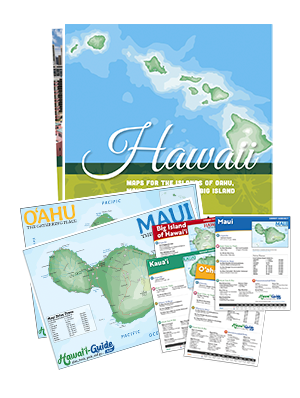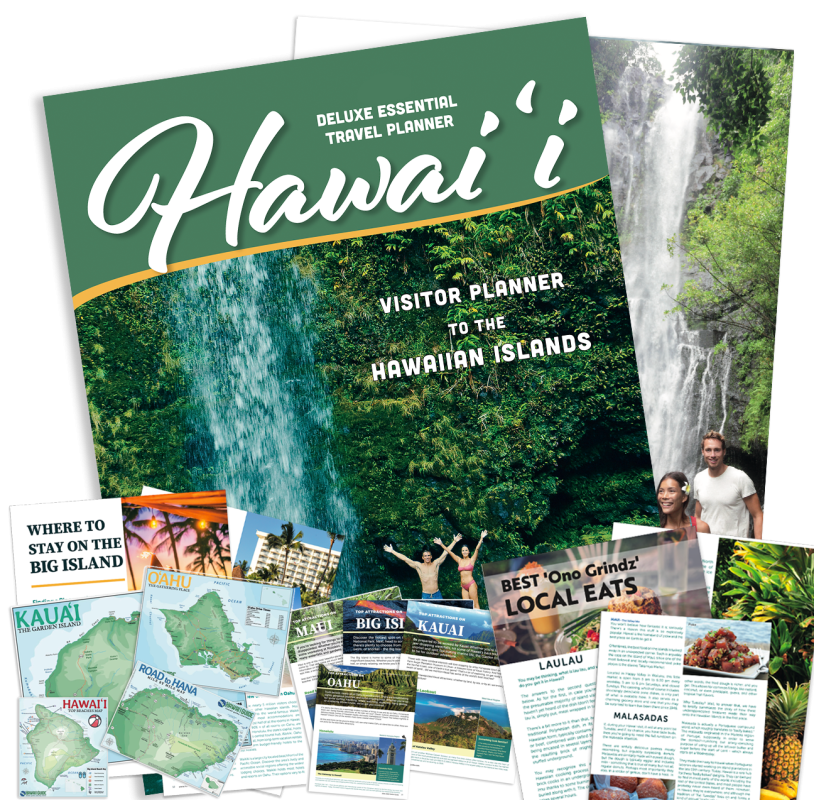Reducing Your Carbon Footprint in Hawaii
Sustainable and Conservation Practices
One of the best things you can do to help support ecotourism in Hawaii is hiring guides and tour operators that are firmly committed to sustainability and green principles; however, because the entirety of your trip won’t be spent on a guided tour, there are additional things you can do to minimize your impact when travelling- all while having fun and not sacrificing creature comforts.
Green Travel
- Choose the most fuel-efficient aircraft available. The Boeing 777, 787, or Airbus 345 are better options if they are available to you.
- Pack light. This reduces overall fuel consumption. As an added bonus, packing light makes the trip simpler and easier for you.
- Walk, bike, or use public transportation if possible. Also, participate in activities that use non-polluting power sources; backpacking, kayaking, or canoeing, for example.
- Rent a hybrid. If you will be renting a car, choose an eco-friendly hybrid or at least one that gets high gas mileage. Ask to reserve a white car if possible, as they use less energy to air condition than darker cars.
Choose Eco-Friendly Accommodations
These can be found at any price point, but what they have in common is a commitment to sustainability. Some things to look for:
- Choose a hotel with a good recycling program. Both private rooms and lobby/common areas should have receptacles. If they have a restaurant on-site, do they compost food waste? What about their use of disposable items such as plastic utensils and cups?
- Reuse towels and sheets. This avoids unnecessary washing and drying.
- Choose lodging that has built-in energy savers. Low-flow toilets and showerheads are great ways to conserve water. Some hotels integrate solar energy into their businesses, with plans for even more to do so.
- Choose culturally- and socially-conscious accommodations. Ask if the majority of their employees hired locally. Also, look for accommodations that protect and respectfully promote cultural sites, as well as incorporate local art and standards of aesthetics into their designs. Many hotels also actively support charities and organizations that work to improve life for local people, animals, and habitats.
- Do your part. Of course, you must support the efforts of your lodging: turn off the faucet and shower when they’re not needed, don’t request daily linen changes, use their recycling programs, and turn off the lights and climate control when you’re not there. Commend your hosts for their efforts and, if you see room for improvement, respectfully bring it to their attention.
Care for the Land and Sea
- Always stay on marked trails. This is for your own safety as well as for the well-being of plants and animals. Most trails have been established with the intention of protecting plants, birds, snails, and insects from humans; veering off can put many species, some of which are endangered, at serious risk. Also, many homeowners have a property that directly abuts trails and roadways; please respect their space and privacy.
- Wash your boots/shoes… especially prior to arriving in Hawaii. Insect eggs, seeds, and other living materials can hitch a ride on your footwear, end up where they don’t belong, and become an invasive species that can wreak havoc and could eventually kill plants and animals.
- Ditch the plastic. Opt for a reusable water bottle. Your staying hydrated should not come at the expense of the environment. Also, when dining out, ask for water in a glass rather than in a plastic bottle. If you do not wish to have water, ask your server not to bring any. Only order what you will eat and avoid take-home containers made of clamshell plastic or Styrofoam, and decline plastic utensils if possible.
- Take only what you need. When visiting an attraction, take only the brochures you need and recycle them at the end of your excursion. Remember, too, that much of the information available in these materials can be obtained online (if you’ll have internet access at your destination).
- Use environmentally-friendly insect repellants and soaps. The topic of DEET-based insect repellants is a bit of a hot button issue that we won’t venture into here. What we can say, however, is that the EPA has classified DEET as a Category III toxin- which means it is ‘slightly toxic’. Despite this, many environmental groups support the use of natural/essential oil-based products, such as lemon eucalyptus oil, Picaridin, or IR3535. If you do feel the need to use DEET-based products, we recommend you choose one with the lowest concentration to meet your needs. If you’ll be camping or washing your own clothes at a hostel, take a multi-purpose natural soap such as Dr. Bronner's to reduce the toxins in greywater.
- Use reef-safe sunscreen. Reefs rely on algae for survival and many chemicals in sunscreens can activate harmful viruses inside the algae, killing them and, eventually, the coral. Even if you won’t be going in the water, your sunscreen can rub off, sweat off, or end up in the greywater when you bathe. Therefore, it is essential to use a reef-safe version. Make sure to apply it 10-15 minutes before any activity so it has time to absorb.
- Take your trash. Make sure to recycle what you can, and take whatever trash you generate with you. If you don’t, your wrapper or plastic bottle may very well injure or kill a land or sea creature. Go a step beyond and remove any trash left by inconsiderate visitors- your actions could save a life.
- Do not take any undeclared plants or animals into Hawaii. This seems obvious, but each year many people are caught trying to do just this. Not only is this harmful, it’s just plain stupid. Smuggle a snake and you’re looking at being slapped with a felony, $200,000 maximum fine, and/or five years in prison.
- Leave what you find. Allow others to experience the same sense of wonder you have when overturning that leaf, finding that volcanic rock, or seeing that amazing flower.
— article continued below —
2024 Hawaii Visitor Guides
Visiting Hawaii soon? Be sure to grab a copy of one of our updated Hawaii Visitor Guides.
~ Trusted by Millions of Hawaii Visitors Annually ~

Support the Locally-Grown/Sourced Food Movement
- Patronize restaurants that serve local fruits, vegetables, fish, and meats. By doing so, you’ll be reducing the carbon footprint and supporting local farmers, fisheries, and growers. Plus, it’s a delicious way to get to know Hawaii’s diverse culinary offerings.
- Visit local farmers’ markets. Whether you’re planning an extended stay, have a hotel kitchenette or camp stove, or are simply yearning for the juiciest pineapple on the planet, local farmers’ markets are the best place to find the freshest offerings grown and raised with Aloha. Plus, your purchase directly benefits communities and their needs. And don’t forget the Kona coffee and macadamia nuts to take home.
Support Local Artisans and Craftspeople
- Buy locally-made souvenirs. Hawaii is bursting with talented artisans who surely have the perfect keepsake for you. You’ll find rare koa wood bowls, kukui nut leis, handmade glass, shell jewelry, and everything in between; and your purchase helps support local talent. (This is another reason you’ll want to pack light, so you have room for your take-home goodies.)
Respect Cultural Beliefs, Traditions, History, and Sites
- Dispel cultural myths. Sadly, much of what many U.S. Mainlanders ‘know’ about Hawaii comes from pop culture, misinformation, and even cultural appropriation. Eliminate what you think you know and make it a point to learn all you can before you travel.
- Appreciate the contributions of Native Hawaiians and Pacific Islanders. They have contributed (and still do) much to the U.S. Mainland, and, indeed, the entire world. Historically, they have been unmatched watermen/women and masters of complex resource management systems. We should learn from their unique understanding of the physical and spiritual connections that exist between land, water, animals, and their ancestors.
- Avoid ‘politics’. The state has had a very complex relationship with the Mainland in many regards, and many Hawaiian residents have strong opinions on these issues. Familiarize yourself with various points of view, but your best bet is to politely keep your opinions to yourself if a chat turns political. Remember, a closed mouth gathers no feet.
- Avoid the temptation to oversimplify what you see. Hawaiian culture incorporates a mix of different Polynesian and Asian cultures. Traditions such as the lei, the hula dance, the luau, foods, music, legends, and even the placement of flowers in the hair have deep cultural significance and layers of meaning. Take some time to learn about these important traditions and inquire respectfully if you have questions.
- Don’t judge, just observe. Of course, this is good practice at any time, but it’s especially important when visiting a new place.
- Learn some Hawaiian words. Hawaii is the only state with more than one official language. While English is spoken just about everywhere, Hawaiian can also be widely heard; sometimes just in short phrases or words. You’ll be just fine with English only, but making the effort to learn some Hawaiian shows respect. In November, 2015 Pidgin was also recognized as an official language. It’s a dialect that has its roots in the state’s plantation fields and has been influenced by many groups of Hawaiian immigrants; many people hold the language close to their hearts.
- Be mindful of your surroundings. Hawaii has many special places that are revered for their cultural, historic, natural, and scenic importance. Show these sites the respect they deserve. Also note that many native burial sites were marked with stones, but over time their locations were lost as surfaces were prepared for agricultural purposes and development. Still others became unrecognizable without family to care for them, or were looted. As a result, Hawaiian burial sites can be encountered anywhere throughout the islands; from remote mountaintops to hotel zones.
Respect and Protect Wildlife
- Learn before you go. Prior to your visit, research the types of land and sea creatures you are likely to encounter based on your travel plans and activities.
- Keep your distance. Both land and sea creatures can be very sensitive to human disturbances and can either harm you or leave the area. If you are approached, calmly back or swim away.
- Hands off. Never feed, taunt, ride, or touch wildlife. Doing so can harm both you and the animal, and, in the case of Hawaiian sea turtles, is illegal.
- Always stay away from wildlife that appears sick or abandoned. Young animals that appear to be orphaned are likely under the watchful eye of a parent. Many of these animals may simply be resting. For example, the Hawaiian monk seal will come onshore early in the morning, where it remains until around sunset. These animals must rest for long periods to regain energy to feed and avoid predators. If you feel an animal is injured, sick, or abandoned, stay away and contact the local authorities.
- Speak Up. If you see other visitors or even tour operators not respecting these guidelines, voice your concerns and redirect them if you can safely do so.
Our love for Hawaii’s stunning beauty need not be at odds with our desire to enjoy her bounty. For all The Islands have shared with the world, we are obligated to be good stewards and care for her… let’s love her; just not to love her to death.

















